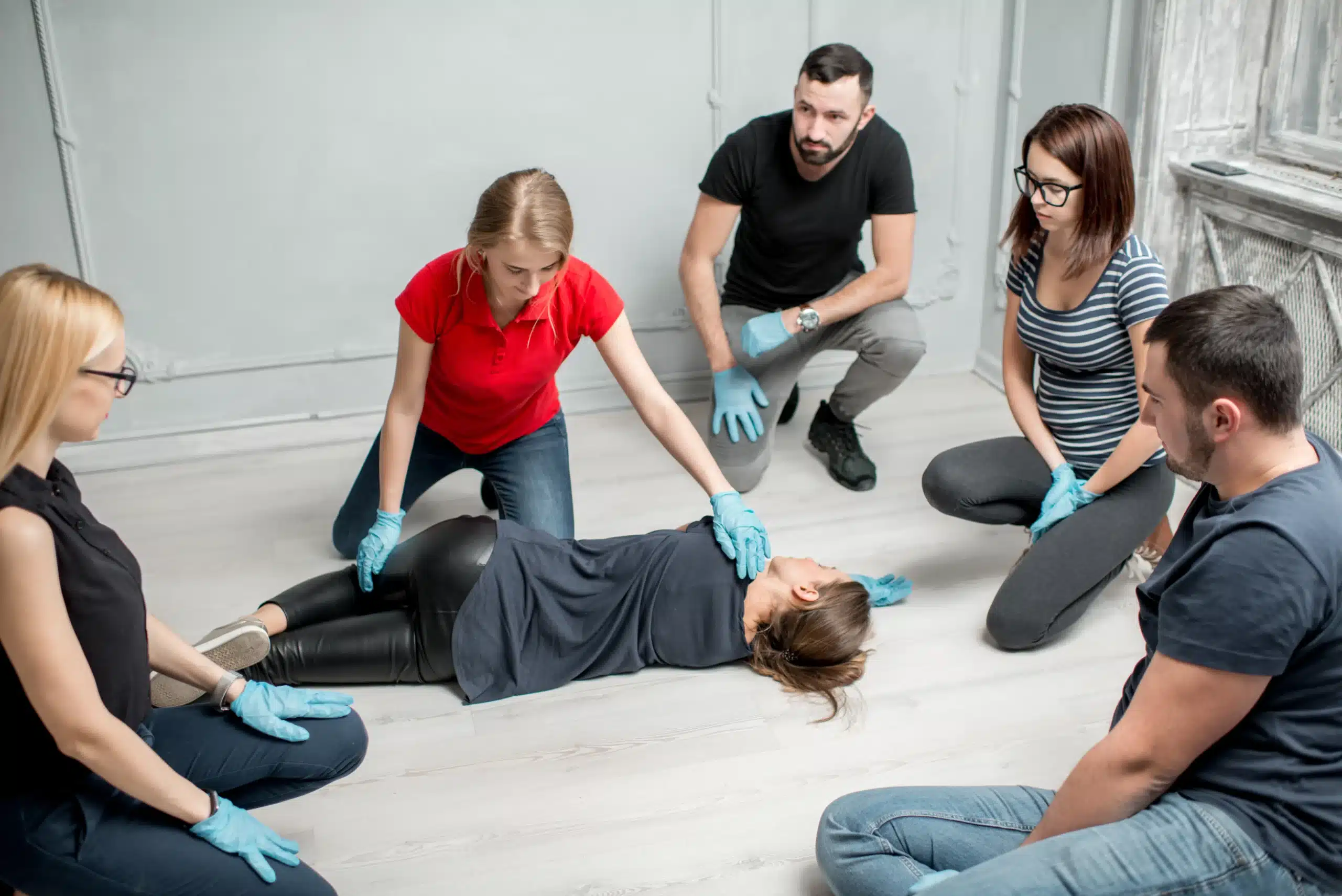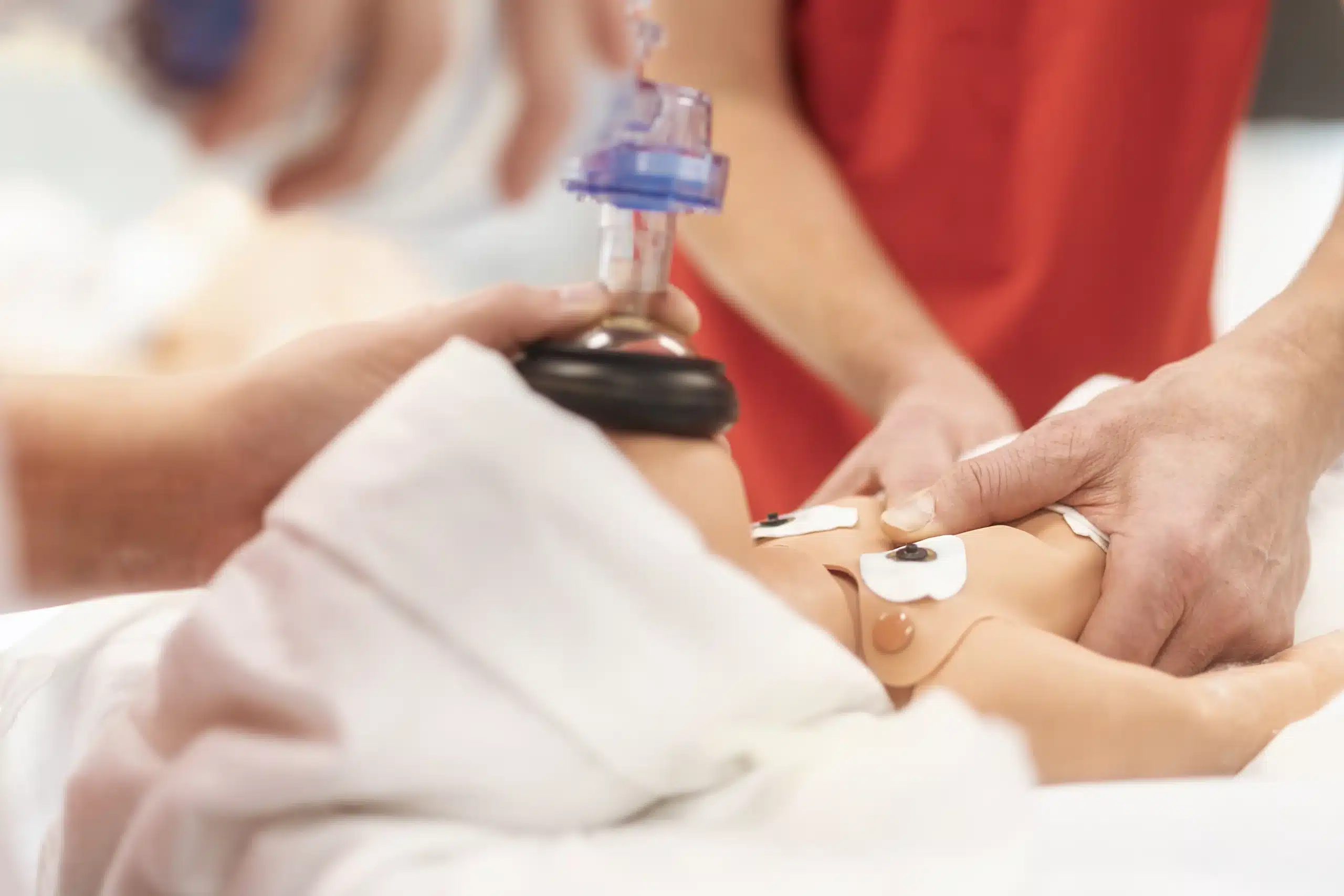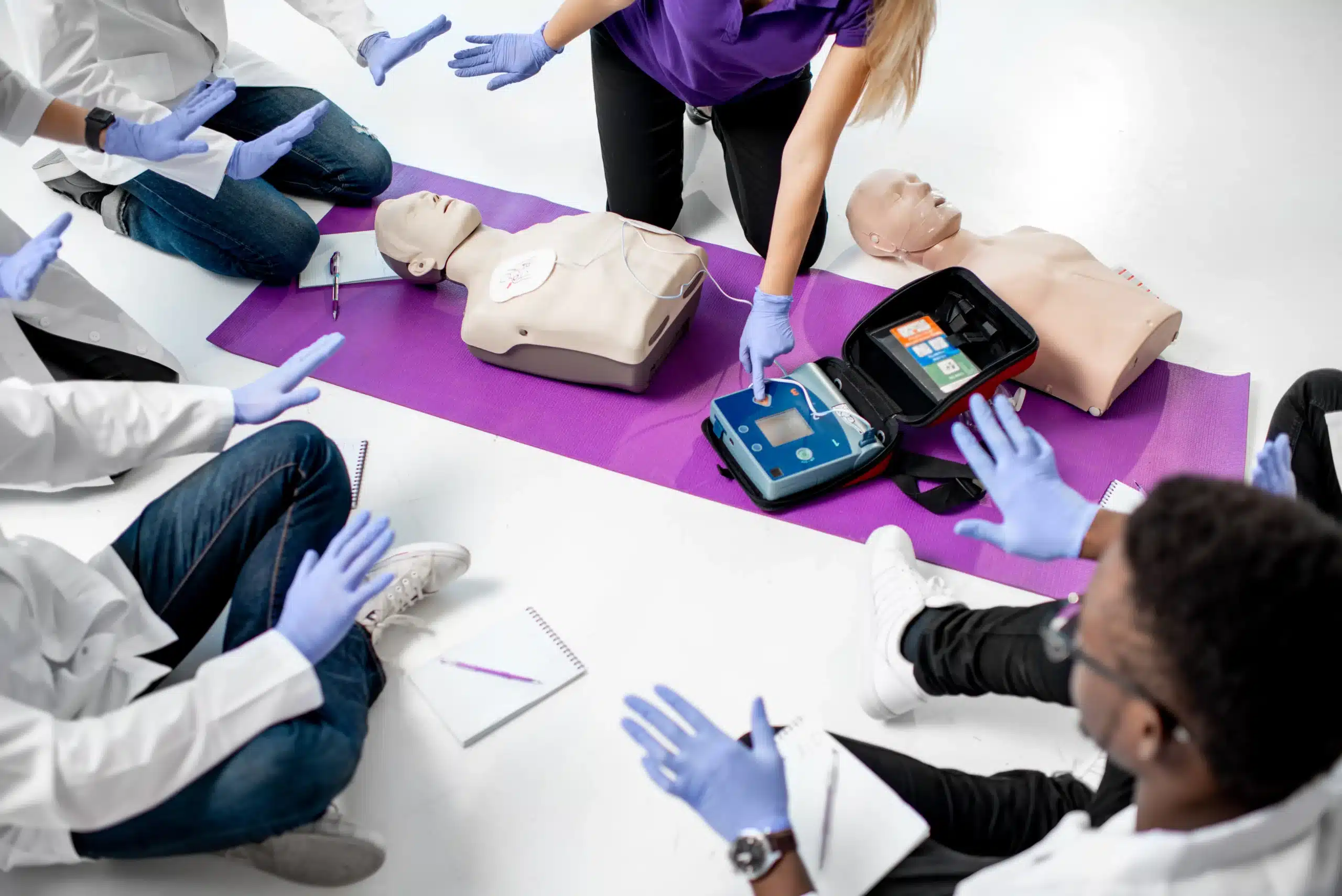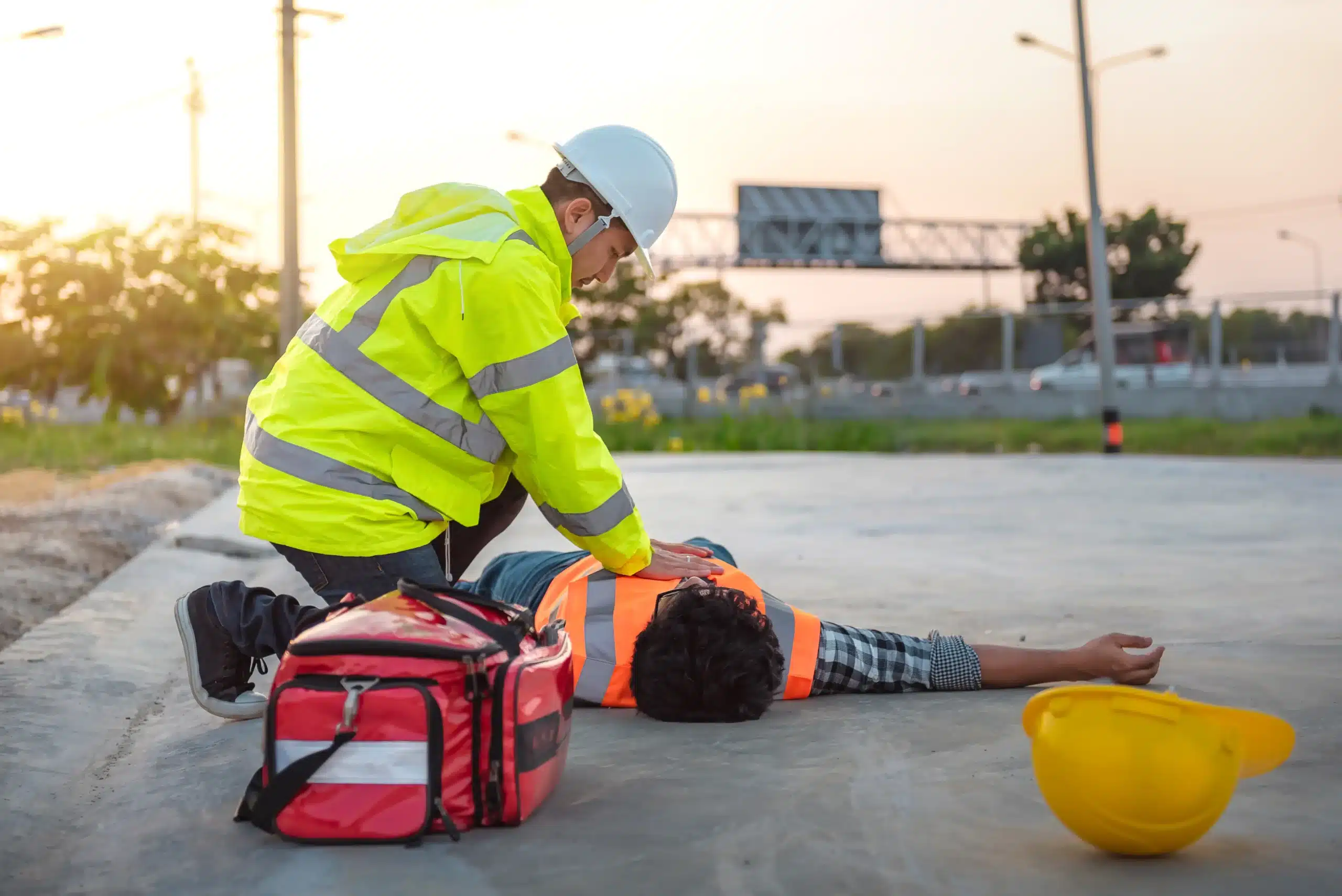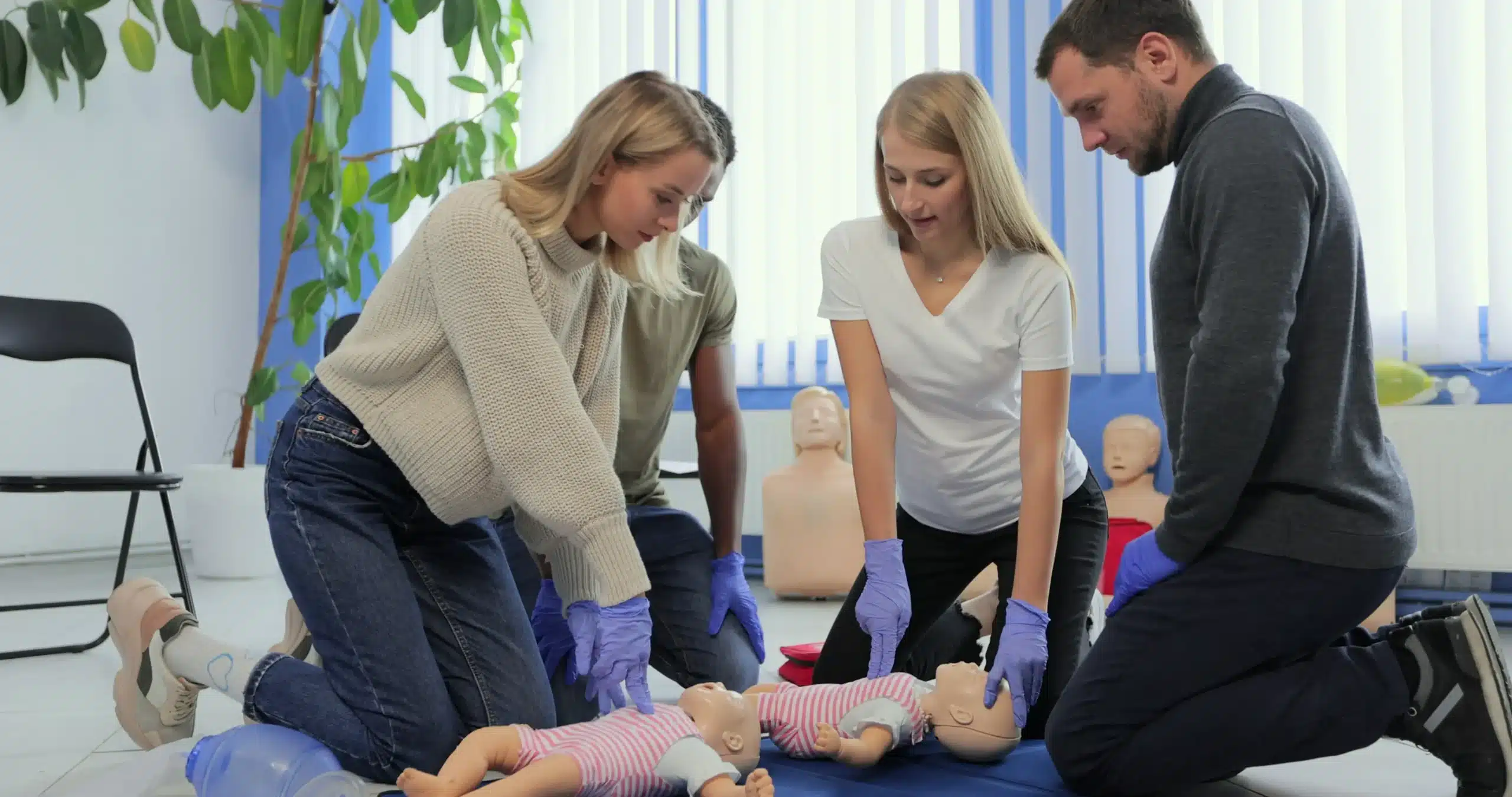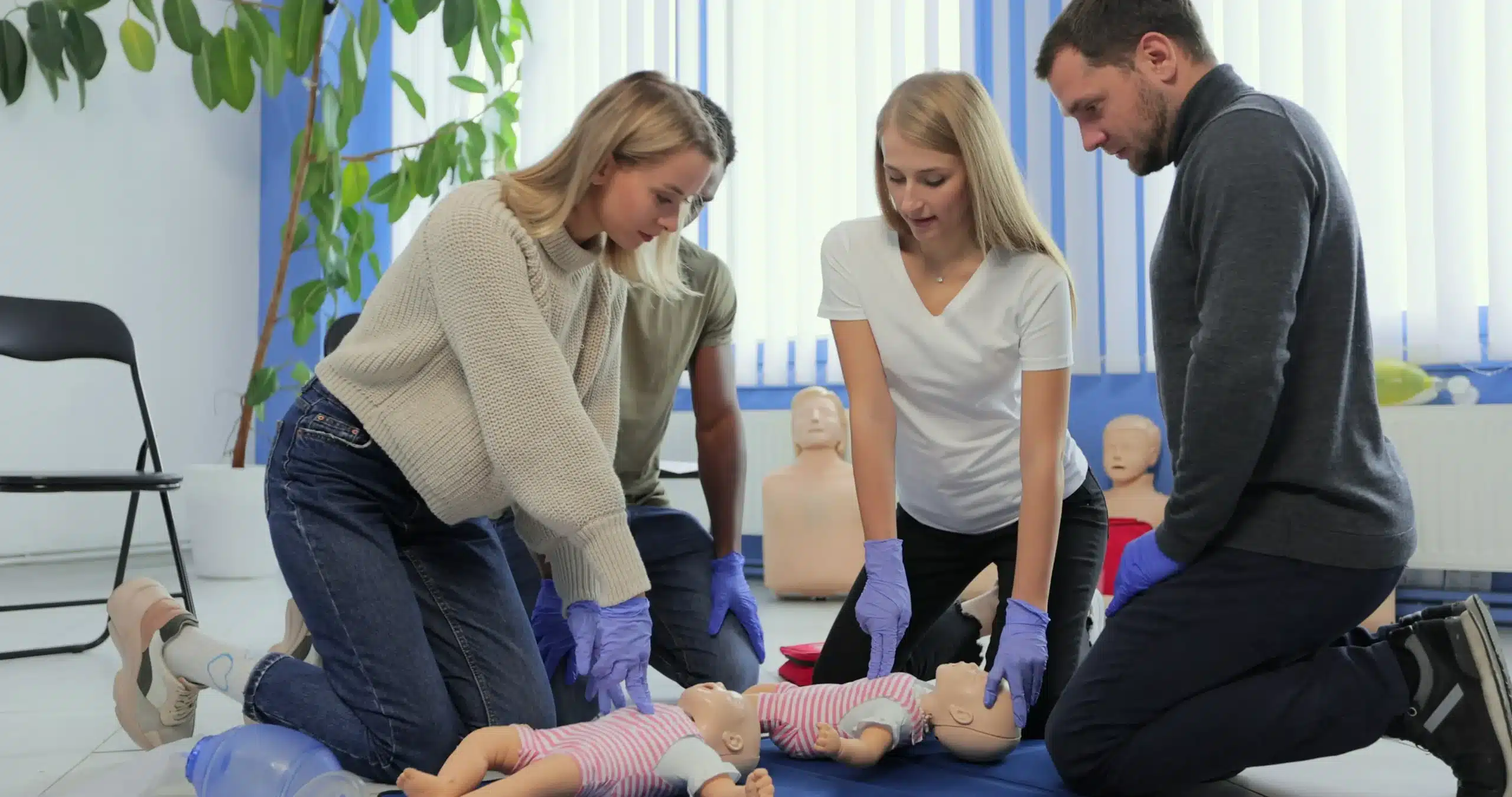Emergencies can happen anytime, anywhere. Are you ready to respond? Learning basic life support in Oakland empowers you with the skills to handle crises confidently. This guide covers everything you need to know about BLS certification in Oakland—from why it’s important to where to get trained and how to maintain your certification. Whether you’re a healthcare professional, a concerned parent, or simply someone who wants to be prepared, understanding BLS can make a profound difference in a critical situation. Let’s explore how you can become equipped to save lives.
Key Takeaways
- BLS certification provides comprehensive emergency response skills: It goes beyond basic CPR to equip you with the knowledge and techniques to handle a range of medical emergencies, including cardiac arrest and choking.
- Select the best training format to fit your lifestyle: In-person BLS courses offer hands-on learning and interaction with instructors, while online options provide flexibility for busy schedules. Choose the format that best suits your learning style and availability.
- Stay current with your BLS skills: Maintaining your certification through renewal courses ensures you’re always prepared and confident in your ability to respond effectively during a medical crisis.
What is Basic Life Support (BLS) in Oakland?
What is BLS and Who Needs It?
Basic Life Support (BLS) is a crucial set of life-saving skills and protocols used in critical situations like cardiac arrest, respiratory distress, or other life-threatening emergencies. It goes beyond basic CPR and equips individuals with the knowledge and confidence to respond effectively. BLS certification is especially important for healthcare providers like doctors, nurses, paramedics, and other medical professionals. Anyone working in healthcare, such as medical assistants, certified nursing assistants, and other support staff, also benefits greatly from BLS training. In Oakland, various organizations, including the American Red Cross, offer comprehensive BLS certification courses. These courses cover essential techniques and procedures, including CPR, AED usage, and airway management. Beyond the healthcare field, BLS training is valuable for teachers, coaches, lifeguards, childcare providers, and anyone who wants to be prepared for an emergency. Having these skills can make a profound difference in a critical situation.
Common Misconceptions About BLS Training
Several misconceptions about BLS training often prevent people from pursuing this valuable certification. One is that BLS is solely for medical professionals. While essential for healthcare providers, BLS training benefits a much broader audience. Anyone who wants to be prepared for an emergency can gain valuable skills from a BLS course. Another misconception is the perceived time commitment. Many assume BLS training requires extensive hours, making it difficult to fit into busy schedules. BLS courses are designed to be efficient and can often be completed in a single day. Finally, some believe BLS training focuses solely on CPR. While CPR is a critical component, BLS covers a wider range of skills, including using an AED, managing airways, and providing relief for choking victims. Understanding these facts helps individuals make informed decisions about pursuing BLS certification and becoming equipped to handle emergencies.
Where to Get BLS Certified in Oakland
Finding the right BLS certification course in Oakland depends on your schedule, budget, and learning style. Here are a few options to explore:
Safety Training Seminars
Safety Training Seminars offers AHA BLS certification courses in Oakland. They pride themselves on excellent customer service, competitive prices, and a convenient schedule with classes offered daily. This woman-owned business also provides other AHA certifications like ACLS, PALS, and CPR/First Aid. If you’re looking for a local option with a focus on quality instruction, Safety Training Seminars is worth checking out. For larger groups, they offer discounts which can be a great option for workplaces or community organizations. They also have a low price guarantee.
American Red Cross
The American Red Cross also offers BLS certification and recertification courses in Oakland. Their program is geared towards healthcare providers and follows national guidelines. Check their website for course schedules and availability.
CPR Certification Oakland
CPR Certification Oakland provides AHA-certified CPR and First Aid classes, including BLS. They serve Oakland and the surrounding Bay Area, with options for on-site training. This makes them a convenient choice if you need training for your workplace or a community group. They offer both CPR-only and combined CPR/First Aid courses.
Oakland Fire Department
While the Oakland Fire Department may offer BLS training, information on their programs can be difficult to find online. Contacting them directly is the best way to inquire about potential courses or public training sessions.
ACLS.com (Online Option)
For those with busy schedules or who prefer online learning, ACLS.com offers an online BLS certification course. This can be a convenient way to get certified without attending in-person classes. Make sure online certification meets your specific workplace or regulatory requirements.
What You’ll Learn in a BLS Course
This section covers the essential skills and knowledge you’ll gain in a BLS course, equipping you with the confidence to respond effectively during emergencies.
Key Components of BLS Training
BLS certification courses cover core life-saving techniques. You’ll learn how to recognize life-threatening emergencies, including heart attacks, strokes, and choking. The curriculum emphasizes early intervention and quick action. A key part of your training will involve mastering CPR for adults, children, and infants. You’ll also become proficient in using an Automated External Defibrillator (AED), a portable device that can help restore a normal heart rhythm. Additionally, you’ll learn basic airway management techniques to help someone who is choking or having difficulty breathing.
Real-Life Scenario Practice
BLS courses go beyond the textbook with realistic simulations to practice your skills. These scenarios cover various situations, from assisting a choking infant to responding to sudden cardiac arrest. This hands-on training builds muscle memory and confidence, preparing you to act decisively in real emergencies. The curriculum also emphasizes teamwork and communication—essential for effective emergency response. You’ll learn how to coordinate with others, delegate tasks, and communicate clearly under pressure. This practical application and teamwork focus ensures you’re well-prepared to handle real-world emergencies.
In-Person vs. Online BLS Training: Which is Right for You?
Choosing the right BLS training format—in-person or online—depends on your learning style, schedule, and professional needs. Both options offer the essential knowledge and skills required for certification, but they differ in their delivery and learning experience. Let’s explore the pros and cons of each to help you decide which path suits you best.
Pros and Cons of Each Format
In-Person Training:
Hands-on learning is a major advantage of in-person BLS training. You’ll practice skills like chest compressions and rescue breathing on mannequins under the direct supervision of an instructor. This real-time feedback is invaluable for mastering proper techniques and building confidence. The classroom environment also fosters interaction with other students, creating opportunities for shared learning and networking. However, in-person classes typically require a greater time commitment, demanding your physical presence at a specific location and time. This can pose a challenge for those juggling work, family, or other commitments.
Online Training:
Online BLS courses offer unparalleled flexibility. You can learn at your own pace, anytime, and anywhere with an internet connection. This self-directed approach allows you to revisit challenging material as needed and tailor your study schedule to your lifestyle. The online format can also be more budget-friendly than traditional in-person classes. However, online training may not provide the same level of hands-on practice. While some programs incorporate interactive simulations, they may not fully replicate the experience of working with physical mannequins and receiving immediate feedback from an instructor. This can be a drawback for kinesthetic learners who thrive on tactile and physical engagement. Some individuals may find it more difficult to stay motivated or engaged with the material in a self-paced online environment.
Choosing the Right Option for You
Ultimately, the best BLS training format depends on your individual needs and preferences. Consider your learning style. Do you thrive in a structured classroom setting with direct interaction, or do you prefer the autonomy and flexibility of online learning? Think about your schedule and how much time you can realistically dedicate to training. Finally, research the specific requirements of your profession or workplace. Some employers may mandate in-person training, while others accept online certification. By carefully weighing these factors, you can choose the BLS training option that best fits your lifestyle and learning goals.
How Much Does BLS Certification Cost in Oakland?
Standard Pricing and What’s Included
Knowing the cost of BLS certification helps you budget accordingly. In Oakland, prices vary depending on the training provider and what’s included. For example, CPR Certification Oakland offers American Heart Association (AHA) certified CPR and First Aid classes. Their CPR class is priced at $64.95, while the combined CPR and First Aid class costs $84.95. These classes typically run for about three hours and your certification is valid for two years, ensuring your skills stay fresh.
Many providers, like Safety Training Seminars, offer the same AHA-certified courses. It’s always smart to compare pricing and course content to find the best fit. Look for what’s included in the standard price. Some providers bundle study materials, while others might charge extra. Clarifying these details upfront prevents surprises.
Group Rates and Available Discounts
If you’re organizing training for a group, like coworkers or a community organization, explore group discounts. Safety Training Seminars specializes in group training for BLS, ACLS, PALS, CPR, and First Aid in Oakland. They can often create custom schedules for larger groups and offer reduced rates. Even if you’re not with a large group, some organizations offer periodic discounts. The American Red Cross sometimes has discounts on training materials, which can help lower the overall certification cost. Keep an eye out for these promotions to save on supplies.
How Long Does BLS Training Take?
Typical Course Length
BLS training courses typically take about 4.5 hours. This covers the essential skills and knowledge you’ll need to perform basic life support effectively. While this is the standard length, some providers offer longer group sessions for a more thorough learning experience. Safety Training Seminars is one example of a provider that offers this extended format, which can be especially beneficial for larger groups or those who prefer a deeper dive into the material.
Accommodating Busy Schedules
Finding time for professional development can be tough. That’s why BLS training providers in Oakland offer a variety of class times throughout the week. This flexibility helps you find a session that works with your schedule. Many training centers, such as CPR Certification Oakland, also offer convenient on-site training, bringing the course directly to your workplace. This can be a time-saving and efficient option for groups. Be sure to ask your chosen provider about the possibility of off-site training sessions as well.
BLS vs. Other CPR Certifications: Choose the Right One
Knowing which CPR certification is right for you can be confusing. This section clarifies the main differences between BLS and other CPR certifications to help you make the best choice. We’ll focus on the key distinctions between BLS and basic CPR, since that’s where most people have questions.
Differences Between BLS and Basic CPR
BLS (Basic Life Support) certification is designed for healthcare professionals like doctors, nurses, and EMTs, as well as first responders such as firefighters and police officers. It covers everything included in a basic CPR course, plus more advanced techniques for managing cardiac arrest, respiratory distress, and airway obstructions. BLS also emphasizes teamwork and communication in medical emergencies. Learn more on our BLS certification page.
CPR (Cardiopulmonary Resuscitation) certification teaches essential life-saving skills, including chest compressions and rescue breaths, for responding to cardiac arrest. This course is suitable for anyone who wants to learn how to help in emergencies, such as teachers, coaches, parents, or other community members. CPR and First Aid classes are also available and you can learn more on our CPR class page. Both CPR and BLS certifications are valid for two years and require recertification.
Selecting the Appropriate Certification for Your Needs
If you want basic life-saving skills to use in emergencies at home, work, or in your community, and you’re not a healthcare professional or first responder, a standard CPR certification is likely all you need.
If you are a healthcare worker or first responder, you’ll need the more comprehensive training provided by a BLS certification to meet professional requirements. BLS is also a good option for people in other professions, such as teachers, coaches, or childcare providers, who want more in-depth training than a basic CPR course offers. We offer group discounts if you’d like to get certified with your colleagues.
How to Maintain Your BLS Certification
Renewal Process and Requirements
Your BLS certification is valid for two years. To stay certified, take a renewal course before it expires. The American Red Cross offers refresher courses and materials to keep you up-to-date on the latest BLS guidelines and techniques. This is important for both healthcare professionals and anyone else who wants to be prepared for emergencies. Check with your certifying organization for specific renewal requirements. Safety Training Seminars also offers convenient renewal courses to help you maintain your BLS skills.
Importance of Keeping Skills Current
Staying current with your BLS skills is critical for positive outcomes in emergencies. Studies show that bystander BLS can dramatically improve survival rates after out-of-hospital cardiac arrests. One study found it can increase the chance of survival by as much as 77%. Regular training not only refreshes your knowledge but also builds your confidence in performing these life-saving techniques. Knowing you can respond quickly and effectively can truly make all the difference in a crisis.
Find Additional BLS Resources and Support
Once you’re BLS certified, staying up-to-date with the latest guidelines and refreshing your skills is essential. Oakland offers several resources to support you.
Refresher Courses and Online Materials
Regularly reviewing BLS skills helps you respond confidently in emergencies. The American Red Cross in Oakland offers BLS renewal training and refresher courses designed for healthcare providers. These courses reinforce essential concepts and techniques. The Red Cross also provides refresher materials, offering a convenient way to review key information. If in-person training doesn’t fit your schedule, consider an online BLS certification or recertification course through a provider like ACLS.com. This format offers flexibility while still covering the same content as traditional courses.
Community Support and Continued Learning Opportunities
Oakland has a supportive community for healthcare professionals. CPR Certification Oakland is a valuable local resource for American Heart Association-certified courses. Connecting with local organizations offers ongoing learning opportunities and keeps you informed about advancements in BLS. Remember, BLS training empowers anyone to respond effectively during emergencies. Understanding the techniques for using an AED, managing airways, and assisting someone who is choking can make a real difference. Safety Training Seminars is another excellent Oakland resource for high-quality, AHA-certified BLS courses, with a range of options to fit various needs.
Employer Requirements for BLS Certification in Oakland
If you work in healthcare in Oakland, Alameda, or Berkeley, your employer likely requires BLS certification. This is especially true for roles involving direct patient care, like nurses, doctors, EMTs, and other healthcare providers working with patients. Having BLS-trained staff ensures a swift, effective response to emergencies. Even roles outside of direct patient care, such as administrative or support staff, sometimes require this training to ensure a comprehensive emergency response system.
BLS certification is typically valid for two years. To maintain your position, check with your employer about their specific renewal policy, as you’ll likely need to recertify. Some employers offer in-house BLS training or partner with organizations like the American Heart Association to provide training tailored to their needs. Before signing up for a course, confirm your employer’s preferred training provider and any specific requirements. For more information about BLS certification courses and group discounts, contact Safety Training Seminars.
Related Articles
- BLS Certification Alameda: The Ultimate Guide – Oakland CPR Classes
- BLS Renewal in Alameda: Your Easy Guide – Oakland CPR Classes
- BLS Certification in Oakland for Healthcare Providers – Oakland CPR Classes
- BLS ACLS PALS Courses in Oakland: Your Complete Guide – Oakland CPR Classes
- Online BLS Classes in Oakland: Your Complete Guide – Oakland CPR Classes
Frequently Asked Questions
Is BLS certification only for healthcare professionals?
No. While essential for healthcare providers, BLS training equips anyone who wants to be prepared for emergencies with valuable, potentially life-saving skills. Teachers, coaches, lifeguards, childcare providers, and even parents can benefit from BLS training.
How long does it take to get BLS certified?
BLS courses are designed to be efficient and can often be completed in a single day, usually around 4.5 hours. Some providers offer longer sessions for groups or those who prefer a more in-depth approach.
What’s the difference between BLS and CPR certification?
BLS certification is more comprehensive than standard CPR training. It includes CPR techniques but also covers AED usage, airway management, and other advanced skills for managing medical emergencies. BLS is often required for healthcare professionals and first responders, while CPR certification is suitable for anyone wanting basic life-saving skills.
How much does BLS certification cost in Oakland?
The cost varies depending on the provider and what’s included in the course. Expect to pay somewhere between $65 and $90 for standard CPR/First Aid training. Many providers offer discounts for groups, so if you’re training with colleagues or a community organization, be sure to ask about group rates.
Where can I find BLS training in Oakland?
Several organizations offer BLS certification in Oakland, including Safety Training Seminars, the American Red Cross, and CPR Certification Oakland. Some providers offer on-site training, which can be convenient for workplaces or community groups. Online BLS certification is also available for those who prefer a more flexible learning option. Be sure to choose a course that is certified by a reputable organization like the American Heart Association.



